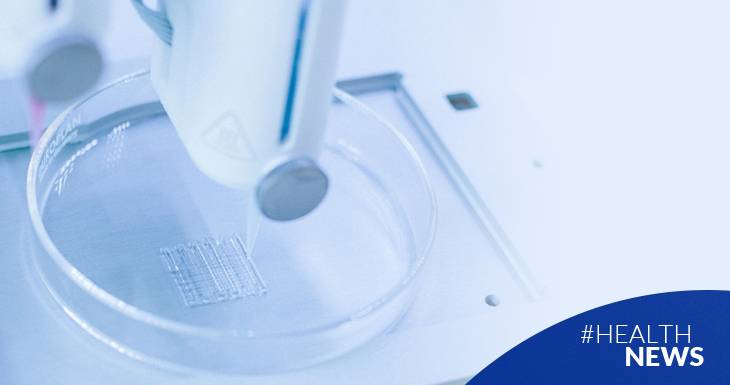Cell printing is a complex process in which have been working and innovating for several decades. It is especially new when it comes to human restorative medicine. In cellular agriculture, standardized mechanisms have been available for a long time to produce bioreactor meat, although, for obvious reasons, medicine for humans is extraordinarily more complex than making hamburgers.
What does it take to 3D print organs?
Basically it is about following these steps:
- Biopsy The first step in printing tissue is a biopsy of the patient. This will be the starting biological material.
- Cell culture Through a cell culture technique inside a bioreactor - a container capable of supplying nutrients and favoring certain reactions - the cells multiply.
- Cell inking Giving consistency to the cells and converting them into a tissue is a complex process that consists of the “inking” of the formula with biological “ink” based on collagen.
- Tissues are shaped The 3D bioprinter then uses these dyed cells and shapes the final tissues.
- Surgery Once the organ from the patient's cells has been formed, it is time to surgically implant it. It is one of the critical aspects, since, unlike the rest, an error can have serious consequences.
Tissue culture is a widely known and well-proven technology for small interventions, which has reached some wonderful milestones in recent years. In 2017, a team of researchers and doctors used stem cell technology, gene therapy, and artificial solid tissue regeneration to save the life of a child who is now leading a normal life.
What is the future?
In the immediate future, biological cell culture technology will be used for clinical trials for the restoration of cartilage and other non-critical tissues, but aesthetic or functional ones to shape noses, spinal discs, knee menisci, rotator cuffs or to recover reconstructive tissue in operations such as lumpectomy. That is, it will have health applications in some cancers, burns or congenital deformities such as microtia.
In the medium term, the possibility of working with cells, inks, moulds, bioreactors and other systems to obtain much more complex tissues is expected, at least in the laboratory.
“One of the challenges that exists today when trying to bioprint on a larger scale is that complex tissues, such as a kidney, are made up of different cell types, layers, structures, and components of the extracellular matrix. . Due to this, new high-definition bioprinting techniques based on the injection of multiple bioinks and materials are emerging simultaneously”, point out from the Harvard Medical School and the Massachusetts Institute of Technology.
Although it is not probable, perhaps a great leap will occur in this decade and the production of perfectly compatible functional organs will be a reality in 2030. What is much more certain is that, by 2050, the final trials initiated in these years will have given positive results. and are very safe and reliable.
It is expected that in the future this technology will have a significant impact on regenerative medicine, allowing the creation of functional tissues and organs that can be used in transplants of simple structures such as bones, cartilage and skin; or in research studies.


